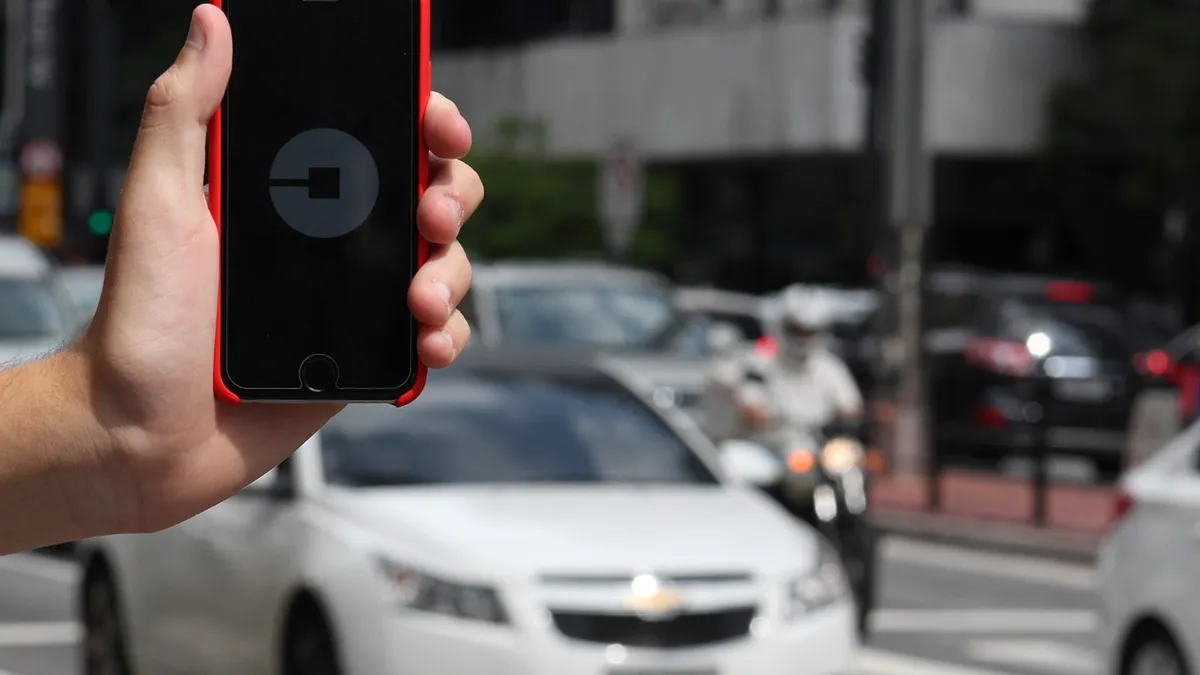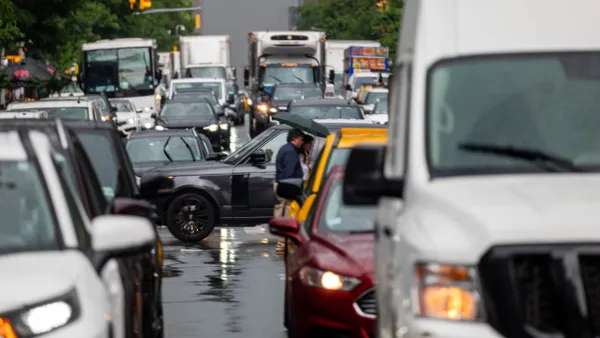Dive Brief:
- Ride-hailing trips from the outer boroughs in New York City increased 40-fold between 2014 and 2017, accounting for 56% of the market by the end of 2017, according to a paper published in the Transportation Research Record.
- Ride-hailing trips increased by 46% across all five boroughs in that time, according to the paper, which analyzed data from the city’s Taxi and Limousine Commission. Rides originating in Manhattan leveled off in that time, with growth coming from outside of the city center.
- A bulk of the new trips originated in minority and low-income neighborhoods without reliable bus or transit service. That, said study author Carol Atkinson-Palombo of the University of Connecticut, suggested that Uber and Lyft were "filling the gap in public transit."
Dive Insight:
In an interview with Smart Cities Dive, Atkinson-Palombo said the surge in outer borough ridership came as a bit of a surprise, given the perception that early adopters of ride-hailing were "well-educated, white, relatively high-income millennials." Instead, she said it appears that many minority and low-income New Yorkers are relying on the services when they live in "transit deserts," something that the companies themselves even seem to recognize. Uber launched an ad campaign in New York last summer saying "even if it’s far away from Manhattan, Uber’s there."
The data is limited to “taxi zones” and doesn’t show pricing information, so Atkinson-Palombo said it is hard to know exactly what types of trips are coming from the outer boroughs. Her team is working on a followup study that will include focus groups in some neighborhoods with heavy ridership to get a better sense of how people are using the services.
But even in its aggregate form, the gobs of new data from the ride-hailing companies can be valuable to transportation officials. Knowing where people pick up more rides, especially in areas where there aren’t other transportation options, can help the city redirect bus routes or create new transit service. A February report from KPMG suggested that transit agencies partner with ride-hailing companies to gather data, and surprising results like the ones from New York show what could be gained.
“If we can identify corridors that are heavily used, transit advocacy groups can help put some transit in or arrange some sort of subsidy,” said Atkinson-Palombo. “Our concern is not that companies are filling in gaps, since that’s good for users. The concern is with pricing, especially now that Uber and Lyft have gone public. If they’re under pressure to make a profit and raise prices, what does that do for these users?”










